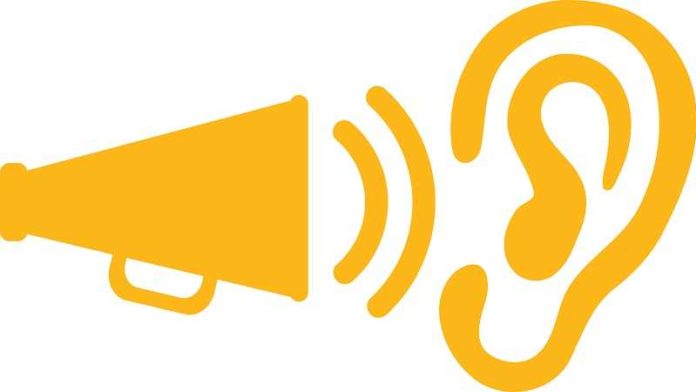What You Need to Know about Audio Branding
Volkswagen recently made headlines with the rollout of not just a new brand identity – but the debut of a new sound logo that will be heard in all VW advertising, promotions and in future VW vehicles.
According to VW, “This sound will make Volkswagen unmistakable acoustically.”
Volkswagon is just the latest in a string of major consumer brands to embrace audio branding; California Closets, Ziploc and Dawn have all embarked on campaigns to develop audio-driven marketing campaigns with a specific focus on sonic identity. Visa also launched a signature split-second sound to help signify to consumers that a payment has been made using Visa both in-store or online.
Many credit the increased prevalence of Alexa and Google Home for the rising interest in audio branding. As marketing guru Gary Vaynerchuk notes, “In a decade, a percentage of people will buy their products, goods, and services on a voice-first device… The problem is, most companies haven’t thought about what their business sounds like.”
What’s more, research suggests adding a characteristic sound to your brand can almost double your profits. Statistics from Man Made Music show consumers are 46% more likely to choose your brand over the competition if you associate a recognizable tune with it.
The good news is that you don’t have to be a Fortune 500 brand to harness the power of sound. Here’s what you need to know now to get started.
What is Audio Branding, anyway?
Quite simply, audio branding covers any sounds associated with a brand. There are a lot of different phrases for this aspect of branding: sonic identity and signature sounds refer to audio logos, while sensory marketing, sonic branding, and sonic representation describe longer-term strategies and processes surrounding a brand’s identity.
The main thing to remember is that sound plays a huge role in how humans experience content, and it’s something that is often overlooked by time-poor business owners. As a starting point, consider a few ways where sound impacts your business:
- Ads across platforms like YouTube, Facebook as well as traditional TV and radio ads
- Messaging systems and hold tones for your phone line
- Welcome video shown on your website
- Messaging systems and hold tones for your phone line
- Live broadcasts and stories on your social networks
Just like your visual identity your audio branding should reflect your style and brand attributes. Is your brand fun? Serious? Educational? Entertaining? Modern? Traditional? Then your audio branding should be too. Practically speaking, the sound elements most relevant for a small business to consider would be an audio logo, music and voiceovers.
It All Starts With An Audio Logo
Three seconds is the sweet spot for an audio logo. It can be an effect, a short musical clip, a musical riff, a voiceover, or a sample. It’s important to remember that if you use any sound other than one you’ve created, ensure you have the proper licensing.
Tips for Creating Effective Audio Logos:
- Keep it short – three to five seconds is ideal.
- Make it distinctive to grab your audience’s attention.
- Opt for simplicity. HBO’s audio logo does this extremely well, perfectly setting the mood and bridging the gap between interesting and minimal.
- Your audio logo will be most effective when it’s used consistently alongside your visual logo. You want the sounds to become synonymous with your visual brand, so use your audio logo throughout the business, not just for one medium.
Choosing Music
You should approach your music choice as carefully as your visual branding. That means you need to start by determining what kind of music fits best… and then finding it. Some considerations include:
- Fast or slow music?
- Low tones (base) or high (treble) tones?
- Will a certain genre complement your brand and resonate with (or alienate) your customer base?
Once you’ve narrowed down the field by answering these questions, you can search royalty-free or inexpensive music on such sites as Audio Blocks or The Music Bakery.
Voiceovers
Choosing the right voiceover for your brand is vital – from ads to explainer videos, this voice will be quite literally talking directly to your customers. A voice that’s young rather than mature can send a different message with a difference in vocal range alone. According to Izabela Russell, from Music Radio Creative, you should consider the following character traits and how they fit in with the rest of your brand identity:
- Age – young or old? What makes the most sense?
- Accent – yes or no?
- Speed – fast or slow reader?
- Gender
Every brand has a voice, therefore every brand can have a sound. You can communicate a story and make an emotional connection with just a few seconds of sound, so don’t be afraid to jump in and take the lead with an effective audio logo to complement your core visual brand.
Pamela Webber is Chief Operating Officer at 99designs, the global creative platform that makes it easy for designers and clients to work together to create designs they love. Earlier in her career, she served in various corporate strategy and marketing positions with eBay and its subsidiary, PayPal, Inc., True&Co, and other fast growing companies in the consumer Internet space. A resident of San Francisco, Pam received her BA from the University of Pennsylvania and a MBA from Harvard Business School. @pamwebber_sf.
Sound stock photo by Aha-Soft/Shutterstock







